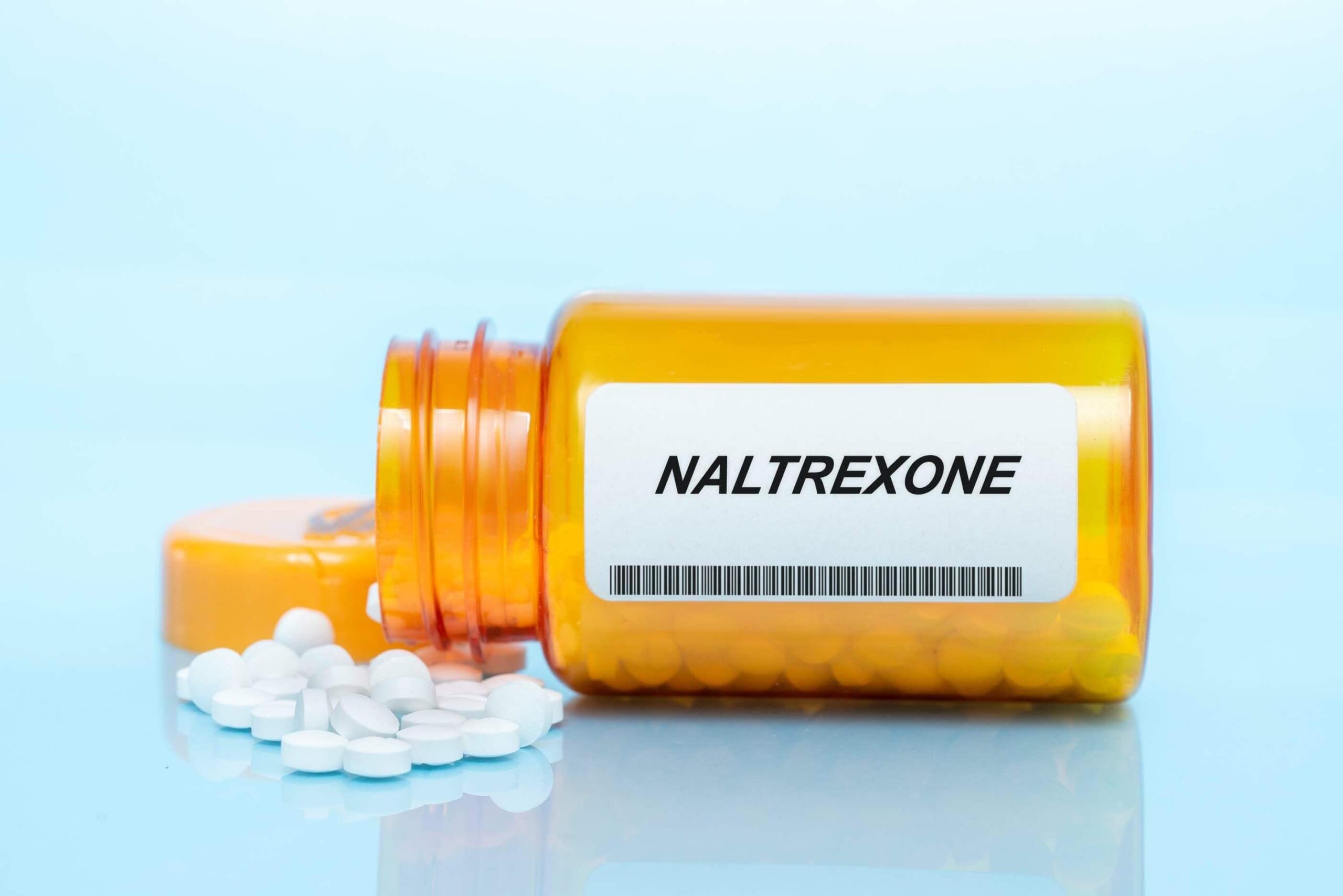Substance abuse disorders (SUDs) continue to sweep the US, affecting the lives of millions of addicts, as well as those they love and care for. Statistics from the NCDAS in 2022 show a harsh reality involving drug and alcohol abuse in the United States. They state that “SUDs affect over 20 million Americans aged 12 and over.” The two most commonly abused substances in this country are alcohol and opioids. Of the 15 million people reported as having alcohol use disorder (AUD), only 8% of them received clinical treatment. Since 2018, alcohol use amongst 12–17-year-olds has seen a 4.4% increase. Opioid use disorder (OUD), though far less normalized and embedded in society, still is widely prevalent across the US. In fact, the average life expectancy in America declined because of opioid overdoses between 2015 and 2017. Since this period, life expectancy has only recovered by 0.16 percent. Besides this, drug overdose deaths increased by 4 percent every year, 67.8 percent of which were opioid overdoses in 2017.
Potential Treatments For OUD and AUD
Seeking treatment for a substance use disorder is of utmost importance. Fortunately, there is an array of treatments for the most commonly abused substances, like OUD and AUD. Substance abuse disorders are often rooted in traumas and struggles with mental health or illness. Therefore, a common treatment for any drug or alcohol disorder can include a wide range of therapies and interventionist methods that can aid with the underlying issues surrounding substance abuse. These include cognitive behavioral therapy (CBT), 12-step programs like AA, and several methods of intervention. For serious cases of addiction, especially to substances like alcohol, methamphetamines, and opioids, medication-assisted treatment is necessary with the aforementioned therapy models.
Medication-Assisted Treatment (MAT)
MAT stands for Medication-Assisted Treatment. It is a treatment used for substance use disorders; more specifically, it treats addiction to drugs like heroin and opiates, as well as alcohol and nicotine. Medication-assisted treatment involves taking pharmacological medications to curb the withdrawal process and minimize cravings. Typically, MAT takes place as a specialized treatment to monitor patients and aid recovery. However, it is also common for MAT to be used in primary care practices, meaning it doesn’t have to take place at a specific facility. An American Society of Addiction Medicine (ASAM) study discovered that Medication-assisted treatment is widely underutilized, perhaps because of misconceptions about how the treatment works, its benefits, and how to get started. With that being said, some MAT drugs can become addictive over time, so it’s important to have a trained professional to monitor and advise you during treatment. Some benefits of medication-assisted treatment include:
- Minimizes Cravings
- Minimizes Withdrawal Symptoms
- Increases Treatment Retention Rate
- Customizable Treatment Plans
- Extended medical support
There are currently 3 drugs that are FDA approved for treating opioid use. These drugs are buprenorphine, methadone, and naltrexone. These MAT drugs serve to block opioid receptors, causing your brain to think it has already gotten the high it so desperately craves.
Medications approved for alcoholism include acamprosate, Antabuse (disulfiram), and, again, naltrexone. Acamprosate serves to dysregulate NMDA-mediated glutamatergic neurotransmission that takes place during chronic alcohol use and during withdrawal. This dampens the physiological happenings that often lead one to relapse. Disulfiram or Antabuse, unlike typical MAT drugs, works by hindering the breakdown of alcohol in the body and creating an acute sensitivity to ethanol.
More About Naltrexone
 Naltrexone, unlike some other medications used to treat certain addictions, is non-addictive and non-narcotic. This means it will not present difficulty to patients who need to taper off medication after getting through the withdrawal period.
Naltrexone, unlike some other medications used to treat certain addictions, is non-addictive and non-narcotic. This means it will not present difficulty to patients who need to taper off medication after getting through the withdrawal period.
Naltrexone works by binding to endorphin receptors in the brain, effectively thwarting the neural effects that occur after chronic alcohol use, especially during early withdrawal. This reduces cravings and also minimizes withdrawal discomfort. Naltrexone was initially used as an opioid antagonist; however, it has also been shown to have strong efficacy when treating AUD.
Naltrexone can be administered via regular injections, daily oral medication, or a pellet implant.
Injectable Naltrexone
Naltrexone injections are generally administered once a month, or once every four weeks — only by a healthcare professional.
Naltrexone injections can be harmful when mixed with synthetic opioids or opioid medications. These can include heroin, fentanyl, methadone, buprenorphine, Vicodin, OxyContin, and more. If you have used any of these drugs 7–14 days prior to consuming naltrexone in any form. You should not use naltrexone if you are pregnant, as this could lead to a dependency in the baby.
Oral Naltrexone
Naltrexone, when consumed orally, is taken every day. It is usually a 50-milligram dosage and is to be administered in a healthcare setting with a medical professional overseeing consumption. This is especially the case when a doctor prescribes oral naltrexone treatment to occur only once every 2–3 days, at a dosage of 100–150 milligrams. The dosage depends on your medical condition and your response to treatment.
Some medications that may interact consequentially with oral naltrexone include dextromethorphan, diarrhea medication (such as diphenoxylate), disulfiram, opioid pain or cough relievers (such as codeine, hydrocodone), thioridazine; as well as the previously mentioned medications that interact harmfully with injectable naltrexone.
Implantable Naltrexone
Studies have shown that naltrexone implants can be useful when treating AUD and OUD. These implants are small medication pellets that are inserted under the skin. The pellets release the naltrexone periodically over 2–6 months. Like any other naltrexone treatment plan or MAT plan, a patient should receive other treatments like counseling and behavioral therapies upon receiving the naltrexone implant.
More About Suboxone
 Suboxone is a mix between buprenorphine and naloxone and is effective for treating AUD and OUD. It is administered via a sublingual film and, unlike naltrexone, can be taken during the withdrawal stages of opioid recovery.
Suboxone is a mix between buprenorphine and naloxone and is effective for treating AUD and OUD. It is administered via a sublingual film and, unlike naltrexone, can be taken during the withdrawal stages of opioid recovery.
Buprenorphine
Buprenorphine is an opioid itself, used to treat opioid use disorder. It works by blocking the reuptake of opioid receptors in the brain. Along with treating opioid use disorder, it can treat acute pain and chronic pain. Buprenorphine affects various receptors in the brain in various ways, meaning it can be an opioid agonist, partial agonist, or antagonist. Therefore, it is a highly effective medication for opioid addiction. It serves to manage withdrawal symptoms and discomfort, as well as reduce cravings in addicted patients. Buprenorphine can be administered under the tongue, beside the cheek, as a skin patch, via injection, or as an implant. As it is an opioid, it should be taken as prescribed by, and in the presence of, a medical professional.
Common side effects of buprenorphine include:
- Constipation, headache, nausea, and vomiting
- Dizziness
- Drowsiness and fatigue
- Blurred vision
- Sweating
- Dry mouth, mouth redness, or mouth numbness
- Tooth decay
- Tongue pain
- Muscle aches and cramps
- Back pain
- Inability to sleep
- Difficulty falling asleep or staying asleep
More serious side effects of buprenorphine can include:
- Hives
- Rash
- Itching
- Difficulty breathing or swallowing
- Swelling of the face, throat, tongue, lips, eyes, hands, feet, ankles, or lower legs
- Agitation, anxiety, and hallucinations
- Fever, sweating, fast heartbeat, shivering
- Severe muscle stiffness or twitching
- Loss of coordination
- Nausea, vomiting, loss of appetite, weakness, or dizziness
- Inability to get or keep an erection
- Irregular menstruation
- Decreased sexual desire
- Slowed breathing
- Upset stomach
- Extreme tiredness
- Confusion
- Blurred vision
- Slurred speech
- Unusual bleeding or bruising
- Lack of energy
- Pain in the upper right part of the stomach
- Yellowing of the skin or eyes
- Dark-colored urine
- Light-colored stools
If you exhibit any of these side effects, be sure to consult your doctor.
Naloxone
Naloxone is a medication that is used to reverse the effects of opioid use and combat decreased breathing during opioid overdoses. Naloxone is more commonly known by brand names like Narcan, Kloxxoda, and others.
In Suboxone, naloxone is added to stop users from potentially injecting buprenorphine recreationally instead of medically. Because buprenorphine is indeed a high-inducing opioid medication, it may behoove an addict to try injecting such a substance intravenously. However, with the addition of naloxone, this issue is all but eliminated. Naloxone, when injected, causes almost immediate withdrawal symptoms and discomfort. This serves to strongly dissuade recovery patients from injecting the substance recreationally or selling it as a product for such use. Implementing naloxone into addiction recovery treatment medicines helps to get addicts clean, as well as keep such medicines safe in the wrong hands.
As with other medications, there are side effects to naloxone consumption in Suboxone, including:
- Agitation
- Body aches
- Chest pain
- Coughing that sometimes produces a pink frothy sputum
- Crying more than usual (in babies)
- Diarrhea
- Difficult or trouble breathing
- Excessive crying
- Fast, pounding, or irregular heartbeat or pulse
- Fever
- Goosebumps
- Increased or excessive unconscious or jerking movements
- Irregular, fast or slow, or shallow breathing
- Irritability
- Nausea or vomiting
- Anxiety
- Pale or blue lips, fingernails, or skin
- Restlessness
- Runny nose
- Seizures
- Shivering
- Sneezing
- Sweating
- Swelling in the legs and ankles
- Trembling
- Weakness
- Yawning
Again, be sure to visit your doctor urgently if you exhibit some of these side effects when consuming Suboxone, buprenorphine, or naloxone.
More About Antabuse
 Antabuse, or disulfiram, is a medication that is used exclusively to treat alcohol use disorder (AUD). It does this by causing patients to develop an acute sensitivity to ethanol (the consumable form of alcohol in alcoholic drinks). Antabuse works by inhibiting the dehydrogenase enzyme in acetaldehyde dehydrogenase in an alcoholic drink, which causes an excess of acetaldehyde. This causes a patient to feel the effects of a hangover or withdrawal from alcohol immediately upon consuming alcohol. Disulfiram is typically used as a second line of defense when treating alcohol use disorder, behind acamprosate and naltrexone.
Antabuse, or disulfiram, is a medication that is used exclusively to treat alcohol use disorder (AUD). It does this by causing patients to develop an acute sensitivity to ethanol (the consumable form of alcohol in alcoholic drinks). Antabuse works by inhibiting the dehydrogenase enzyme in acetaldehyde dehydrogenase in an alcoholic drink, which causes an excess of acetaldehyde. This causes a patient to feel the effects of a hangover or withdrawal from alcohol immediately upon consuming alcohol. Disulfiram is typically used as a second line of defense when treating alcohol use disorder, behind acamprosate and naltrexone.
Antabuse is administered in tablet form at either 250mg or 500mg dosages. It is recommended that one be prescribed Antabuse at a 500mg per day dosage for the first two weeks. Once a patient has been receiving Antabuse regularly, and exhibits self-control regarding drinking, they may continue to take daily tablets at a dosage of 250mg.
Antabuse treatment should only be prescribed to motivated individuals and in conjunction with other psychotherapies. There are a number of common side effects from Antabuse use. These include:
- Fatigue
- Headache
- Impotence
- Metallic aftertaste
- Acneiform eruptions
- Polyneuritis
- Rash
- Hepatitis
- Peripheral neuropathy
- Optic neuritis
- Psychotic disorder
If you notice one or more of these symptoms when taking Antabuse, be sure to consult with a medical professional.
The effects of Antabuse can last for up to 2 weeks, so a patient should be made fully aware of the disulfiram-alcohol reaction. This should implore a patient to stay sober, to avoid a highly uncomfortable experience.
Disclaimer
All of the medications discussed here are opioid drugs or involve chemical reactions in the brain and body that should not be taken lightly. These medications, and others used for MAT purposes, can become addictive (though significantly less addictive than synthetic variants like heroin, fentanyl, and methadone.). These drugs should be taken only under the supervision of a medical professional and in conjunction with various other methods of treatment and therapy. Drug and alcohol abuse is no stranger to most of us, and the consequences can be horrendous. Therefore, medication-assisted treatment is often a blessing for those lives plagued by addiction, making recovery a feasibility that may have otherwise been utterly dismissed.
We Can Help You
Overcoming addiction takes time and effort; however, addiction treatment has come a long way and now provides ways to soften the recovery process. If you or a loved one is struggling with addiction to drugs or alcohol, a medication-assisted treatment plan may very well be the best option. Please contact us to learn more.


 Verify Insurance
Verify Insurance
 Toll Free Call
Toll Free Call